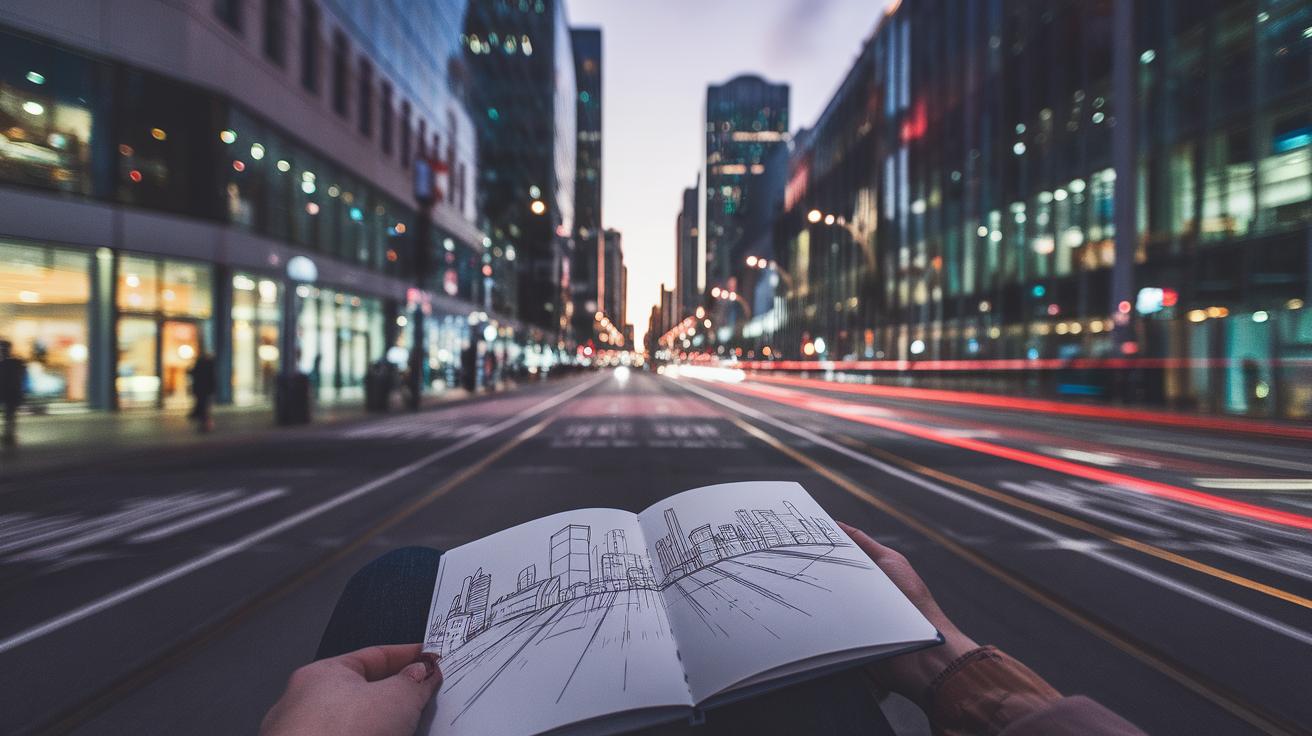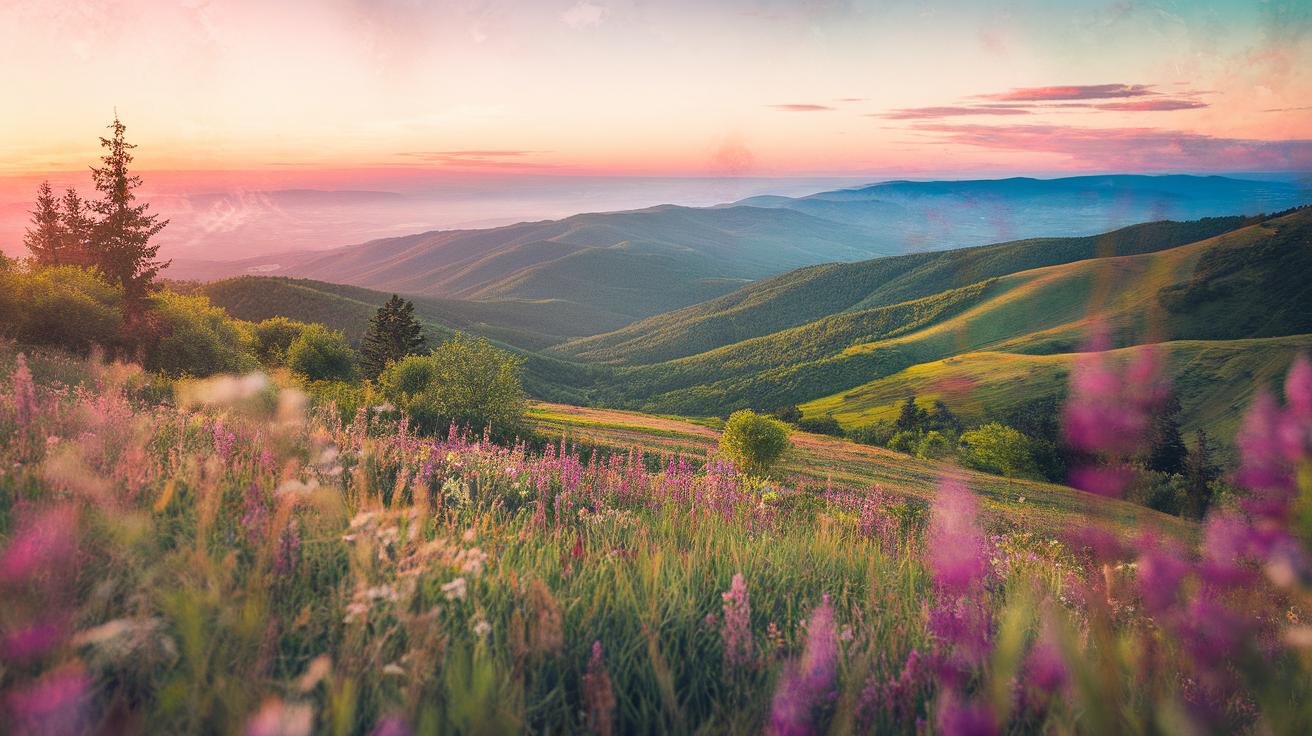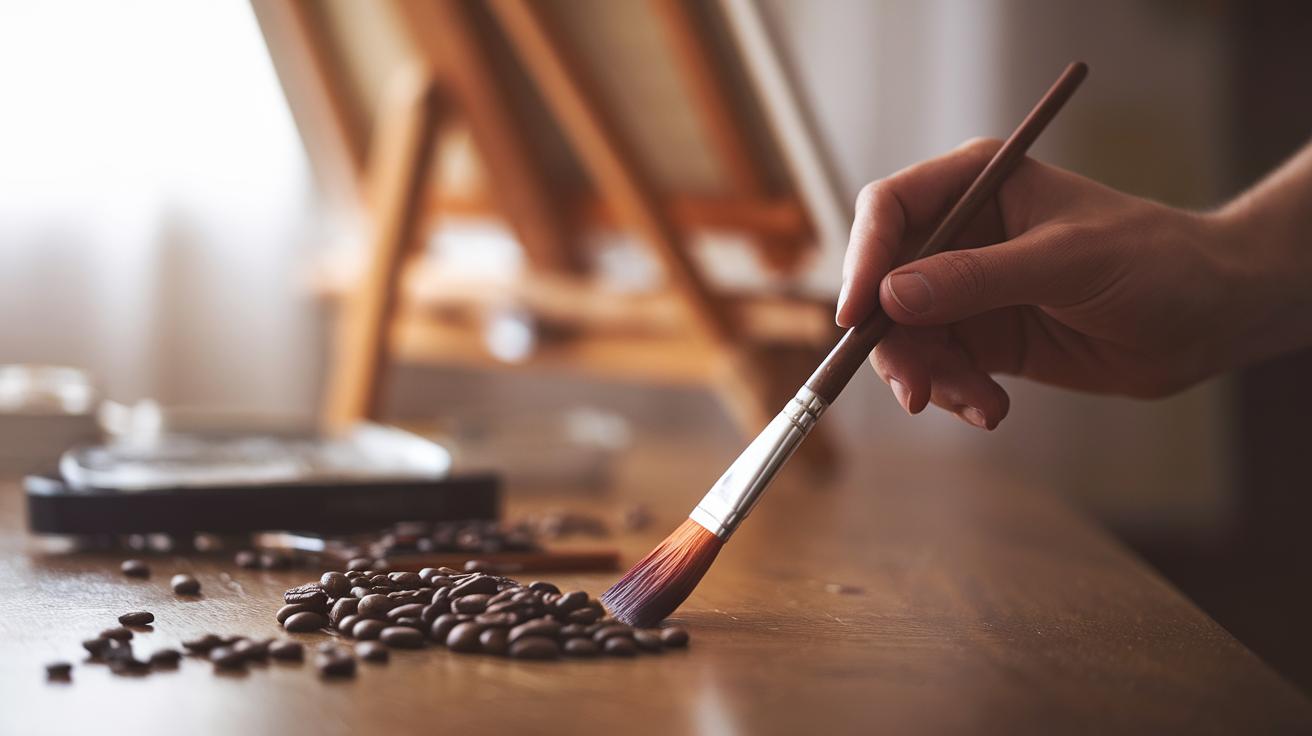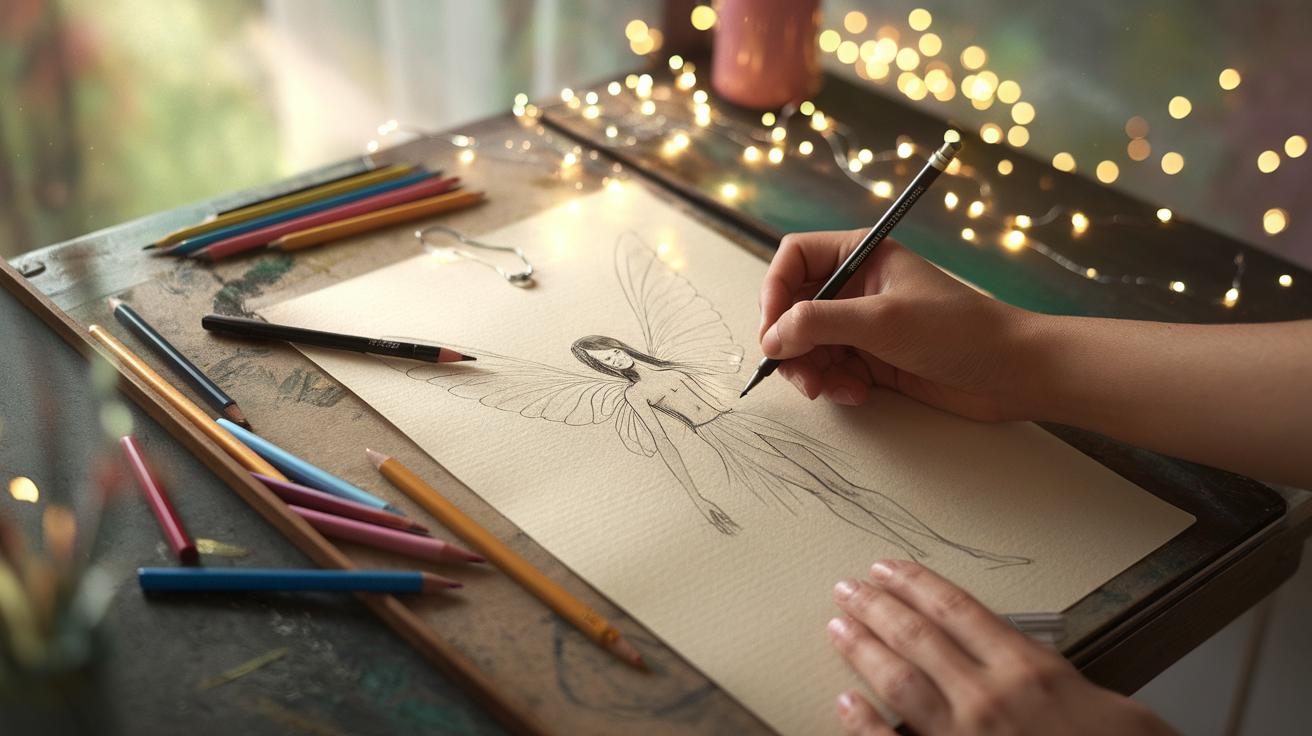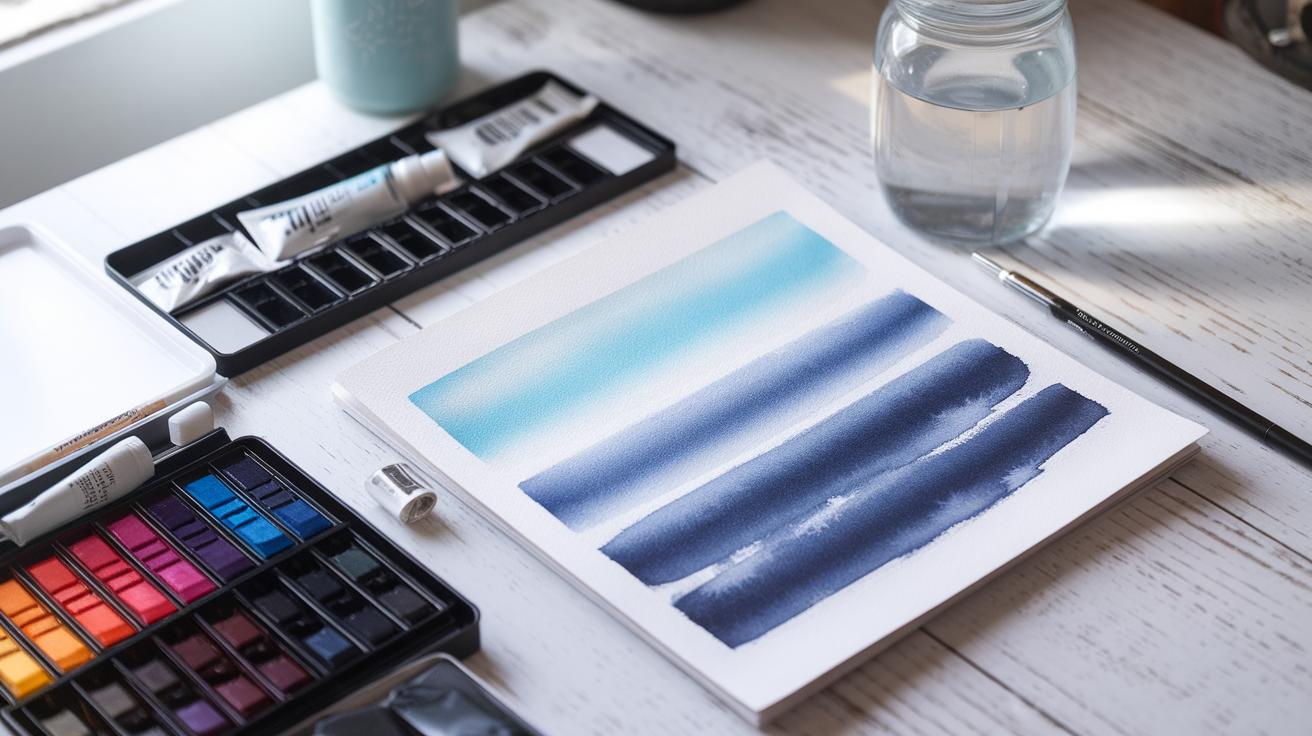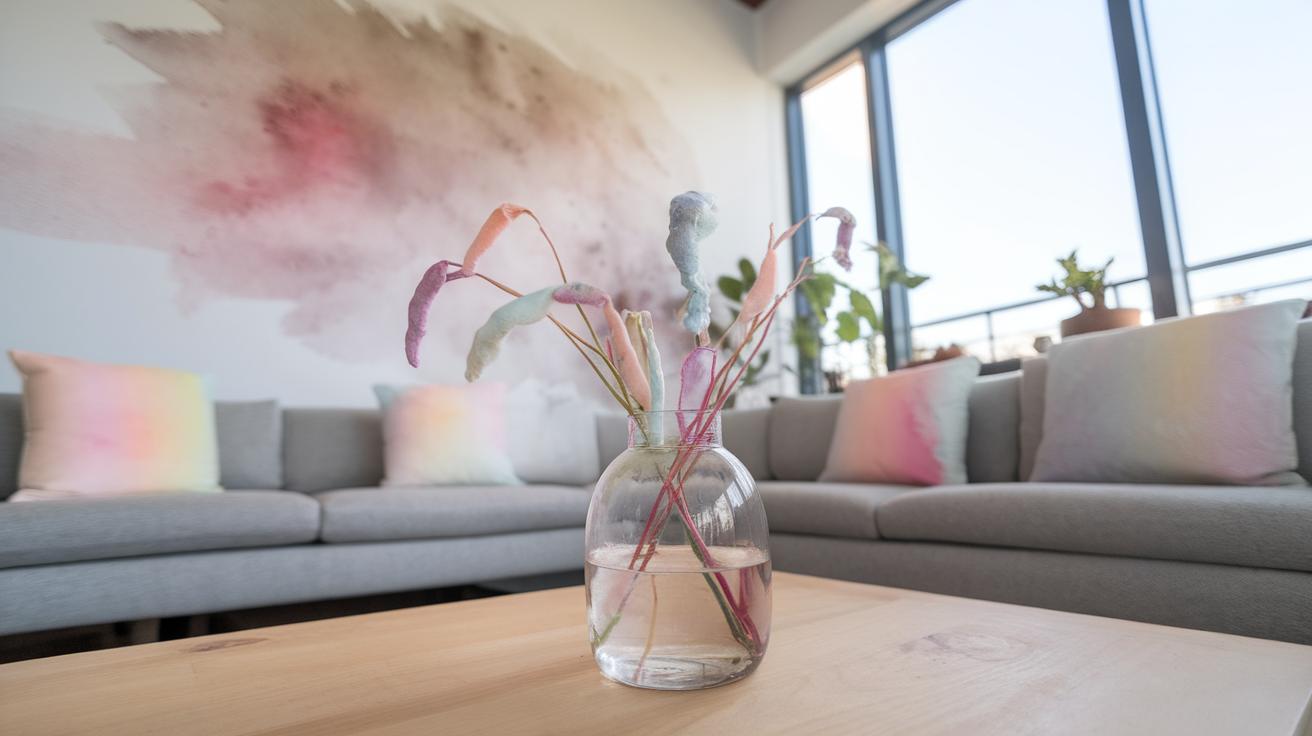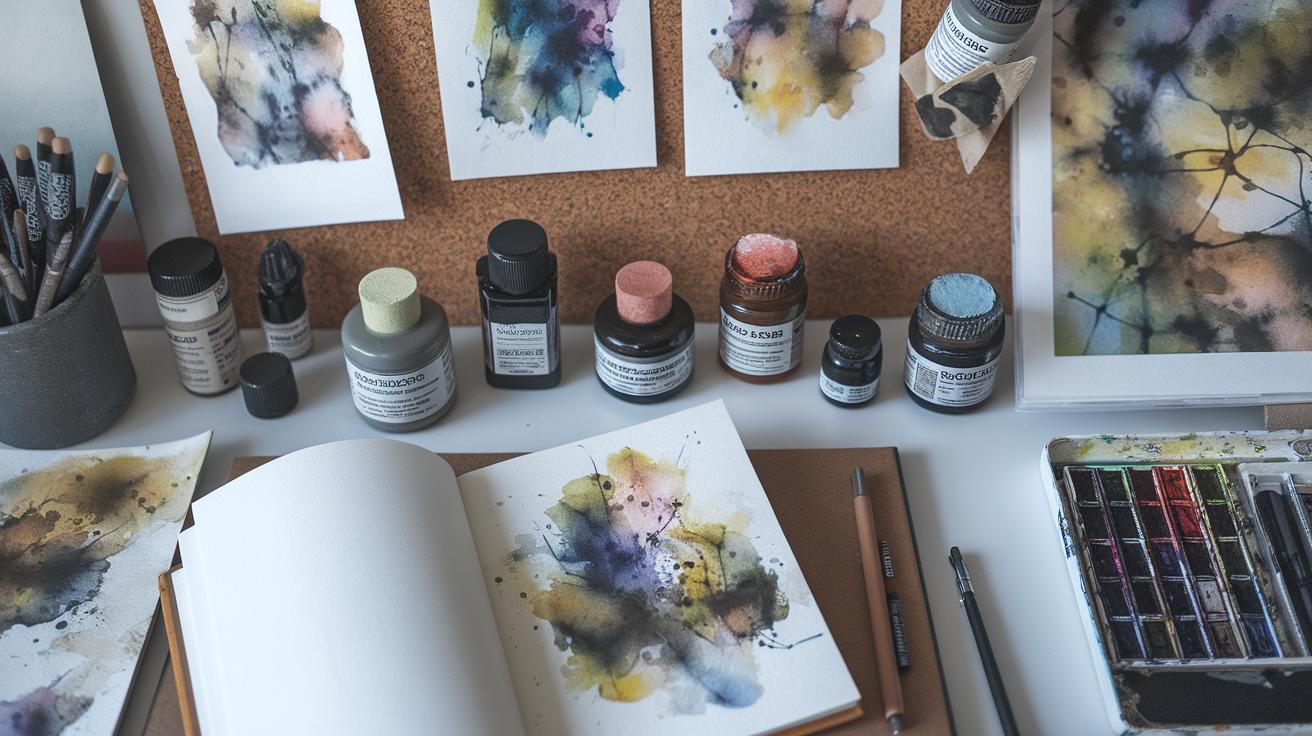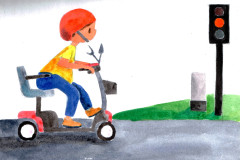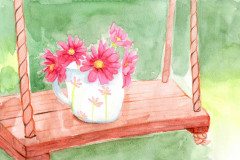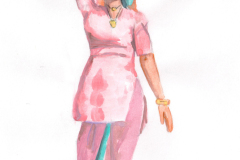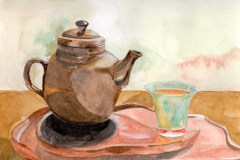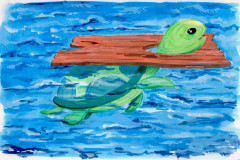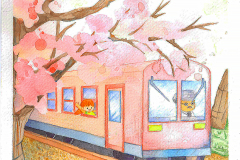Introduction
Watercolor painting uses pigments mixed with water, offering unique transparency and texture. This watercolor medium has a history rooted in many cultures, evolving over centuries into a popular art form today. Artists often use watercolor for its ability to capture light and subtle color changes. Many artists find inspiration through daily practice, building skills and creativity gradually. A daily watercolor inspiration project gives you a fresh idea to paint each day. It trains your eye and your hand, improving your technique and confidence. Practicing regularly keeps you engaged and motivated in your art.
Daily watercolor prompts provide structure and new subjects for your creativity. They can help you overcome artist’s block by presenting simple but interesting challenges. You can explore different themes like nature, objects, or abstract shapes. Each prompt pushes you to try new techniques or experiment with colors. As you work through these daily inspirations, your skills grow steadily. You learn to express ideas more clearly with watercolors. This article guides you through the benefits of daily projects and provides practical tips to start your own watercolor journey.
Understanding Watercolor Painting
Watercolor painting uses pigments mixed with water to create images on paper. This technique differs from oil or acrylic painting because it relies on transparency. Watercolors let light pass through the pigment and reflect from the paper, giving a unique glow to the artwork. The flow of water controls how the paint moves, resulting in soft blends or sharp details.
Originating thousands of years ago, watercolor spread across many cultures, from ancient Egypt to East Asia and Europe. Its portability made it popular for sketching outdoors. You can achieve delicate washes or bold strokes by adjusting the water amount. Think about how the water changes pigment behavior; mastering this can improve your control and expression.
What styles do you want to explore using watercolor’s fluid and light nature? This method encourages experimentation and quick decision-making. Understanding how water interacts with pigment and paper will help you create memorable pieces unlike those from other painting types.
Watercolor Basics
Choosing the right materials impacts your painting’s final look. Watercolor pigments come in tubes or pans. Tubes offer strong color, while pans are easier for travel. Papers differ in texture and weight; rough papers absorb water quickly, creating granulated effects, while smooth papers allow finer detail.
Brushes shape your strokes. Synthetic brushes hold water well and are budget-friendly. Natural hair brushes, like sable, give smoother lines but require care. How you mix water with pigment also changes transparency and intensity.
Try layering washes on absorbent paper for depth or using less water for sharp lines. Your choice of pigment strength, paper quality, and brush type will influence how your watercolor feels and behaves. Ask yourself which material suits your current project’s mood and complexity.
Historical Significance
Watercolor painting has played key roles in many cultures. In ancient China, artists used it to capture landscapes with subtle tones, focusing on harmony with nature. European artists in the 18th century adopted watercolor for scientific illustrations, recording plants and animals with precision.
During the Victorian era, watercolor became popular among amateurs and professionals for its accessibility. In the American West, painters used watercolor on expeditions to document new landscapes. These examples show how watercolor served both artistic and practical purposes.
How might understanding these traditions inspire your work? You can connect with a long history of painters who used watercolors not just to create art, but to express observations and emotions unique to their times. This historical context deepens your appreciation and encourages you to find your own voice within this rich legacy.
Benefits of Daily Watercolor Practice
Painting every day helps sharpen your artistic skills step by step. When you commit to daily watercolor work, your hand and eye start to coordinate more smoothly. This makes controlling brushes and mixing colors easier. Your brushstrokes become cleaner and your techniques more consistent.
By practicing often, you learn how different paper types and water amounts affect your results. Imagine trying a new blending style each day and watching your accuracy improve. Over time, this steady effort reduces mistakes and builds muscle memory.
Daily painting also expands how you think about your art. Reaching for your paints regularly pushes you to try new ideas or perspectives. You begin to see shapes, colors, and textures in everyday life that inspire your next piece.
Sometimes, exploring themes outside your comfort zone can reveal hidden skills or interests. How does painting daily influence the way you visualize your next artwork? This routine builds confidence, helping you trust your choices while you create.
Regularly facing different challenges in your projects allows you to grow creatively. You get better at problem-solving and develop your own style without pressure. These small but steady steps lead to noticeable improvements in your watercolors and your creative vision.
Skill Development
Your hand and eye work better together with daily painting. Each session trains your brain to control fine brush movements and manage color flow. This practice improves lines, shapes, and blending techniques gradually.
Time spent mixing pigments and layering washes increases your understanding of how watercolors behave. You discover which strokes give soft edges or strong contrast. Regular repetition builds muscle memory, so your strokes become fluid and confident.
Consistency in painting also helps you notice small errors and adjust faster. You learn to balance water and pigment amounts by trial and error. How could developing this control change the quality of your next painting?
Daily practice pushes you to work on specific techniques, such as wet-on-wet or glazing. The more you try these, the easier they feel, making complex effects achievable. You build a toolbox of skills ready to use anytime.
Creative Growth
Working with watercolors every day encourages fresh ways to see your surroundings. You start noticing colors in objects or shadows you might have ignored before. This visual awareness expands your creative ideas.
Frequent creation breaks mental blocks by offering new challenges regularly. You might experiment with abstract shapes or unusual color blends, stretching your artistic limits. These experiments lead to discoveries about your style and preferences.
Daily painting tasks invite curiosity and problem-solving. When something doesn’t work, you try another approach. Each choice teaches you something new about composition and color relationships.
How would your creativity change if you painted daily for a month? Few weeks of constant effort can shift your artistic thinking and open up new possibilities you had not considered before. This continuous practice drives your art forward.
How to Use Daily Watercolor Prompts
Choosing the right prompts helps keep your painting focused and rewarding. Start by looking for themes that feel exciting or meaningful to you. If you like nature, select prompts about trees, flowers, or seasons. If you want to improve shading, pick subjects with clear light and shadow. You can also challenge yourself by trying prompts that push your limits, such as complex textures or unusual colors.
Approach each prompt as a chance to learn rather than produce perfection. Set small goals, like experimenting with blending or creating strong outlines. Listen to your experience after each painting—what worked, what felt hard? This reflection improves your skills and keeps you engaged.
Try grouping prompts by style or topic to build deeper understanding. For example, spend a week on watercolor landscapes before moving to still life. This gives your practice variety without feeling random.
Selecting Relevant Prompts
Focus on prompts that catch your interest and push your abilities slightly beyond comfort. If a prompt doesn’t inspire you, it will be harder to stay motivated. At the same time, picks that are too easy won’t help you grow.
Think about areas you want to improve. Maybe capturing quick shapes, or layering transparent colors. Choose prompts targeting those skills. Your daily painting becomes more directed and effective.
Ask yourself what type of scene or object you want to explore next. Pick prompts related to that. This keeps your practice personal and meaningful.
Staying Consistent
Daily painting can be challenging when your motivation dips. Create a simple routine to make it easier. Set a fixed time and place for your work. Even 10 minutes counts.
Prepare your materials ahead of time to reduce friction. When you sit down, don’t worry about making a masterpiece. Aim to experiment or enjoy the process.
Remind yourself why you started. How will practicing improve your art? Track your progress visually by saving each painting. Seeing growth helps maintain your habit.
If you miss a day, don’t stop. What small step can you take tomorrow to get back on track? Consistency builds skill over time more than any single perfect session.
Exploring Different Themes in Watercolor
Choosing themes for your daily watercolor projects helps you stay focused and motivated. Landscapes invite you to capture the world around you, whether mountains, forests, or cityscapes. They challenge you to observe light, color, and perspective closely.
Still lifes allow you to practice composition and detail by painting objects like fruits, flowers, or household items. They offer a chance to study shapes and textures at your own pace.
Portraits focus on capturing expressions and human features. Working on small daily portraits can improve your facial anatomy skills and use of subtle tones.
Abstract themes free you from strict forms. You can experiment with shapes, colors, and mood, sparking creativity without perfecting every detail.
Which theme fits your mood today? Rotating themes can keep your practice fresh and expand your skill set.
Nature and Landscapes
Painting outdoors, or en plein air, connects you directly with nature’s colors and moods. Observing how light changes through the day encourages quick, bold brushwork.
If you prefer working from photos, choose images with strong contrasts or interesting compositions. These details help create lively watercolor scenes.
Try breaking complex landscapes into simple shapes and colors first. Building your painting in layers helps capture depth.
Have you noticed how a tree’s shadow changes depending on the sun’s position? Observing such shifts makes your paintings more vibrant and realistic.
Abstract and Experimental
Abstract watercolor projects push you to experiment with the medium’s texture and flow. Using wet-on-wet means applying wet paint onto a moist surface, creating soft blends and unexpected shapes.
Blending colors directly on paper can lead to surprising transitions and effects. This technique builds your control over water and pigment.
You might try layering washes or adding salt for texture. Each attempt teaches you more about paint behavior.
Will you let the paint lead? Removing the need for precise shapes can unlock new artistic ideas and reduce pressure in daily practice.
Techniques to Experiment With in Daily Projects
Basic Techniques
Washes form the foundation of many watercolor works. You can practice flat washes by applying even color over a large area, or try gradient washes to shift smoothly from dark to light. Dry brushing uses a mostly dry brush to create rough, scratchy strokes. This technique is great for painting textures like tree bark or grass with fewer pigments. Layering builds depth by letting colors dry before applying more paint on top. Try painting a simple object in several layers to see how the color changes. Blending mixes colors directly on paper while both are still wet. It requires timing to keep edges soft but controlled. Daily painting with these basics will help you build steady control over water and pigment. Ask yourself which technique feels easiest to improve and start there.
Advanced Effects
Salt creates spotted textures when sprinkled on wet paint. The salt absorbs pigment in a way that leaves interesting patterns. Try different types of salt—table salt versus sea salt—to see the effect each has on your washes. Lifting removes paint by blotting or scrubbing once the paint is partly dry. You can use a damp brush or a tissue to create highlights or fix mistakes. Masking fluid covers areas before painting so you can preserve white paper beneath layers of color. Applying it with a small brush protects those spots, which you peel away after the paint dries. Working with these effects challenges you to plan and experiment. Try using salt on one day’s prompt and masking fluid on another. Which advanced effect pushes your creativity further?
Organizing Your Watercolor Practice Space
Creating a dedicated space for your watercolor work helps you maintain consistent daily sessions. Choose a spot where you can leave your materials out or easily set up without hassle. Think about the size of your workspace; it should be large enough for your palette, paper, and brushes but not so big you feel overwhelmed. Organize items within arm’s reach to avoid interruptions.
Arrange your tools so you can quickly grab what you need. Consider using containers or trays for brushes and a water jar that won’t tip easily. A flat, sturdy surface supports your paper and prevents warping. Are you designing a space that invites you to sit down and paint every day? Small changes like this make your practice feel natural and less of a chore.
Essential Tools and Materials
Start with quality watercolor paints, such as tubes or pans from trusted brands that offer vibrant colors. Select a range of brushes, including round brushes for details and flat brushes for washes. Synthetic or natural hair brushes each have their strengths; try both to find what feels right. Paper matters most–choose 140lb cold-pressed paper for texture, or hot-pressed for smooth surfaces.
Hold sheets or blocks keep paper flat and ease transport. Adding a palette with mixing wells offers organization while blending colors. Don’t forget masking tape or clips to secure your paper. How often do you check the condition of your brushes or paper? Keeping these tools in good shape improves your results and motivates continued practice.
Creating a Comfortable Environment
Good lighting is vital; place your workspace near a window or use a daylight lamp that mimics natural light. This shows your colors accurately. Use a comfortable chair with back support so you can paint without strain. Position your table at a height that lets you reach materials easily and keeps your posture healthy.
Storage helps keep your area tidy and focused. Use shelves or drawers for paints and papers, and opt for clear containers so you quickly find what you need. Make cleaning supplies handy for quick brush rinses and spills. Can you make small adjustments to your setup that help you stay longer at your easel without fatigue or distraction? This leads to more consistent and enjoyable creative sessions.
Tracking Your Progress and Reflecting on Your Work
Tracking your daily watercolor paintings helps you see how your skills grow over time. When you document each piece, you create a clear record of your efforts and improvements. This process encourages regular reflection, allowing you to spot patterns in what techniques work or where you struggle. Are you controlling your water better today than last week? Is your color mixing becoming more precise? Asking questions like these can guide your practice.
Reviewing your earlier work side by side with recent paintings highlights your development and motivates you to keep going. You will notice new strengths and areas that need focus without guessing. This habit also helps you set realistic progress goals and maintain consistent artistic growth.
Keeping a Watercolor Journal
Writing down the date, materials, and methods for each painting lets you track every detail of your creative process. When you note which paper, brush, or pigment you use, you learn what gives the best results. Recording techniques—such as wet-on-wet or dry brushing—reveals what you enjoy or want to try more.
These notes provide valuable insight later. For example, you might see that using cold-pressed paper matches your style better than hot-pressed. Or perhaps mixing certain colors creates unique effects you want to replicate. Your journal becomes a personal guide to improve and experiment thoughtfully.
Evaluating Skills Over Time
Regular self-evaluation helps you measure progress beyond just visual changes. Compare your paintings to identify what methods sharpen your control, color sense, or composition. Try rating each piece on specific skills like brushwork, layering, or blending. This creates clear feedback for your next practice session.
Ask yourself questions such as: Which techniques feel challenging? What subjects inspire me? Where do mistakes usually happen? Using photos or scans of your work makes this easier. Over weeks, you’ll spot trends and unlock ways to build new skills. Reflection turns painting from a simple hobby into focused learning.
Overcoming Challenges in Daily Painting
Finding time to paint every day is often the biggest hurdle. You may have work, school, or family duties that demand attention. Try setting a fixed time each day, even if it’s just 10 or 15 minutes. Treat this like an appointment you cannot miss. Use small pockets of time, like early mornings or right before bed. Having your materials ready also saves time and removes excuses.
Creative blocks can stop your progress. When ideas dry up, allow yourself to paint without pressure. Experiment with simple shapes or colors just to get started. Change your environment or try a different subject. If frustration grows, step away for a bit and return later with fresh eyes. Keep a list of prompts or inspiration images handy for moments when your mind feels blank.
Consistency depends on how you handle obstacles. What makes you keep going when painting feels tough? Identifying your own barriers helps you find solutions that fit your life. The key is to stay flexible but committed to showing up, even on hard days.
Managing Time
You don’t need hours of free time to paint daily. Try breaking your session into small chunks. Five to ten minutes of quick sketches can add up. Use a timer to stay focused and avoid distractions. Having a dedicated space where your supplies are always out makes it easier to start. Planning your painting time like any other task increases the chance you’ll follow through.
If mornings work better, wake up a little earlier. If evenings suit you, wind down with painting instead of scrolling on your phone. What is one small change you can make in your daily routine to fit in your art? Even small consistent efforts build habit and skill over time.
Handling Creative Blocks
Creativity can stall when you expect perfection. Lower your expectations and allow mistakes. Focus on movement, color, or texture instead of a perfect result. Try a warm-up exercise like painting a circle or mixing new color blends. Switching to a different style or subject can refresh your mind.
Seek inspiration from everyday life. Look at the world around you and ask, “What can I capture today?” Journaling ideas or keeping a sketchbook helps your mind stay active. When stuck, ask yourself what excites you about watercolor. What is the smallest thing you can paint right now?
Creative blocks don’t last forever. The goal is to build habits that carry you through dry spells. You will find your flow again if you keep showing up and trying new approaches.
Joining a Community for Inspiration and Support
Sharing your watercolor work with others can grow your skills in ways painting alone cannot. When you post your paintings, you invite fresh perspectives that help you see strengths and areas to improve. Feedback from fellow artists often points out details you might miss on your own.
Communities inspire you to try new techniques or subjects. Seeing others’ work can spark ideas you would not have considered. You get reminders that challenges in painting happen to everyone, which builds your confidence to keep going.
How often do you feel stuck or doubt your progress? Engaging with a group can provide motivation during those moments. You also build connections with artists who share your passion, making your creative journey less isolated.
Finding Online and Local Groups
Many online groups form around daily watercolor prompts. Platforms like Facebook, Discord, and specialized art forums host active communities where artists post their work and offer feedback daily. You can join these groups by searching for terms like “daily watercolor challenge” or “watercolor prompt group.”
Local art meetups or workshops also provide chances to connect in person. Check community boards, libraries, and art supply stores for events. Meeting others face-to-face often leads to deeper discussions and hands-on learning experiences.
Have you tried combining online and local involvement? This approach gives you constant inspiration while building real-world friendships with other painters.
Participating in Challenges
Challenges invite you to create regularly under set rules or themes. Social media platforms, such as Instagram and TikTok, host popular watercolor challenges that encourage posting daily or weekly works. These challenges help maintain creative momentum.
Engaging with challenges also means receiving prompt feedback through comments and likes. This interaction fuels your motivation to improve and keeps you accountable to your practice. Many artists find that claiming a space within a challenge community pushes them past artist’s block.
You could even start your own challenge among friends or followers to further increase your commitment. What themes or prompt styles help you express your best creativity?
Conclusions
Using daily watercolor inspiration projects encourages regular practice, which is key to improvement. The prompts guide you to explore subjects and techniques that you might not choose otherwise. This variety expands your creative range and keeps your practice lively. As you build this habit, you gain better control of paint and color. You also learn to respond quicker to new ideas. These small daily exercises turn into meaningful progress over time. You become more confident in your artistic voice and more comfortable with watercolor’s unique qualities.
Engaging in daily watercolor prompts connects you with a community of artists sharing similar goals. It can provide encouragement and fresh perspectives through shared work. This routine enhances your creativity and discipline. It challenges you to see the world in new ways. With your commitment, watercolor painting transforms from a hobby into a skillful art practice. How will you use your daily inspiration to grow as a watercolor artist starting today?



